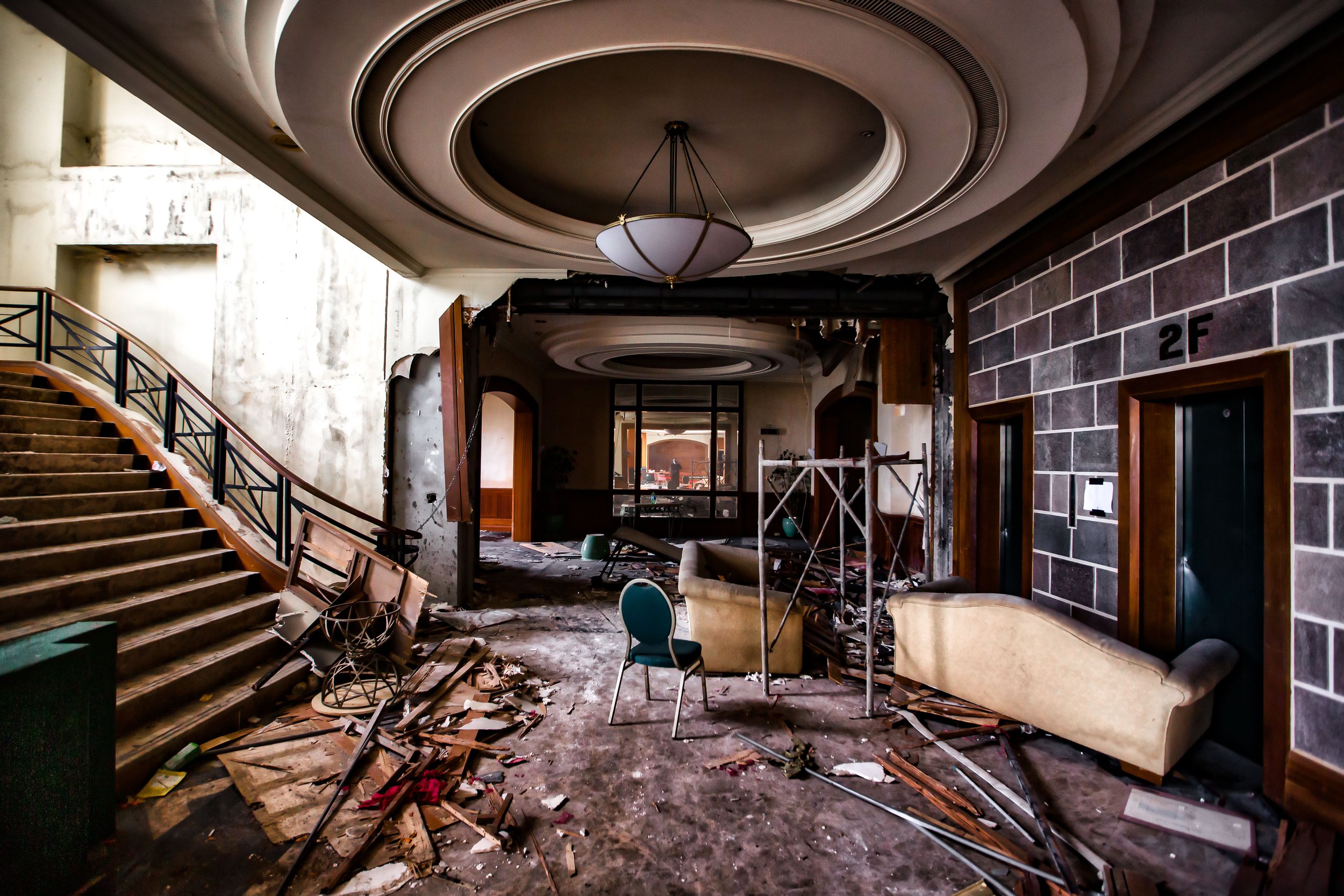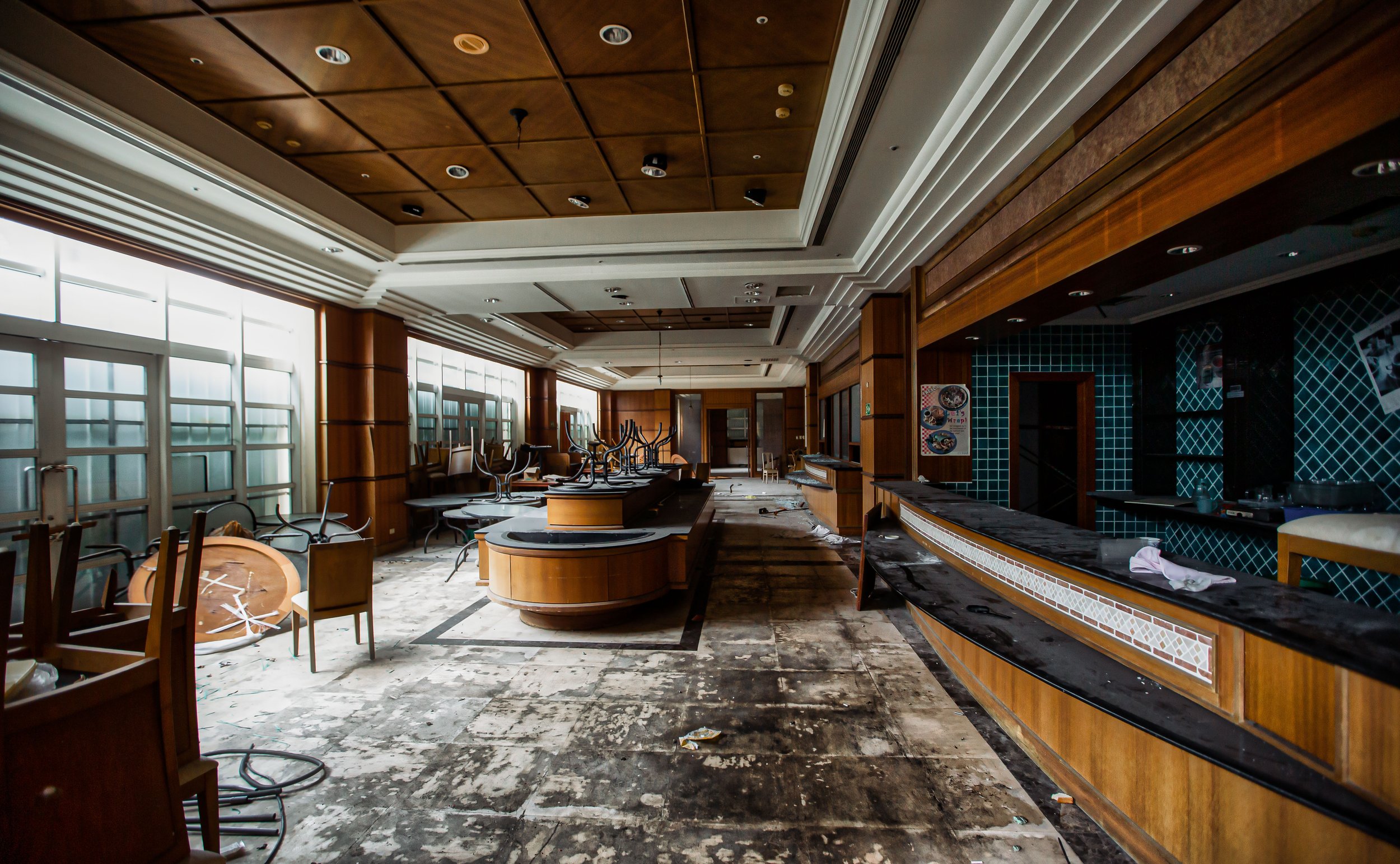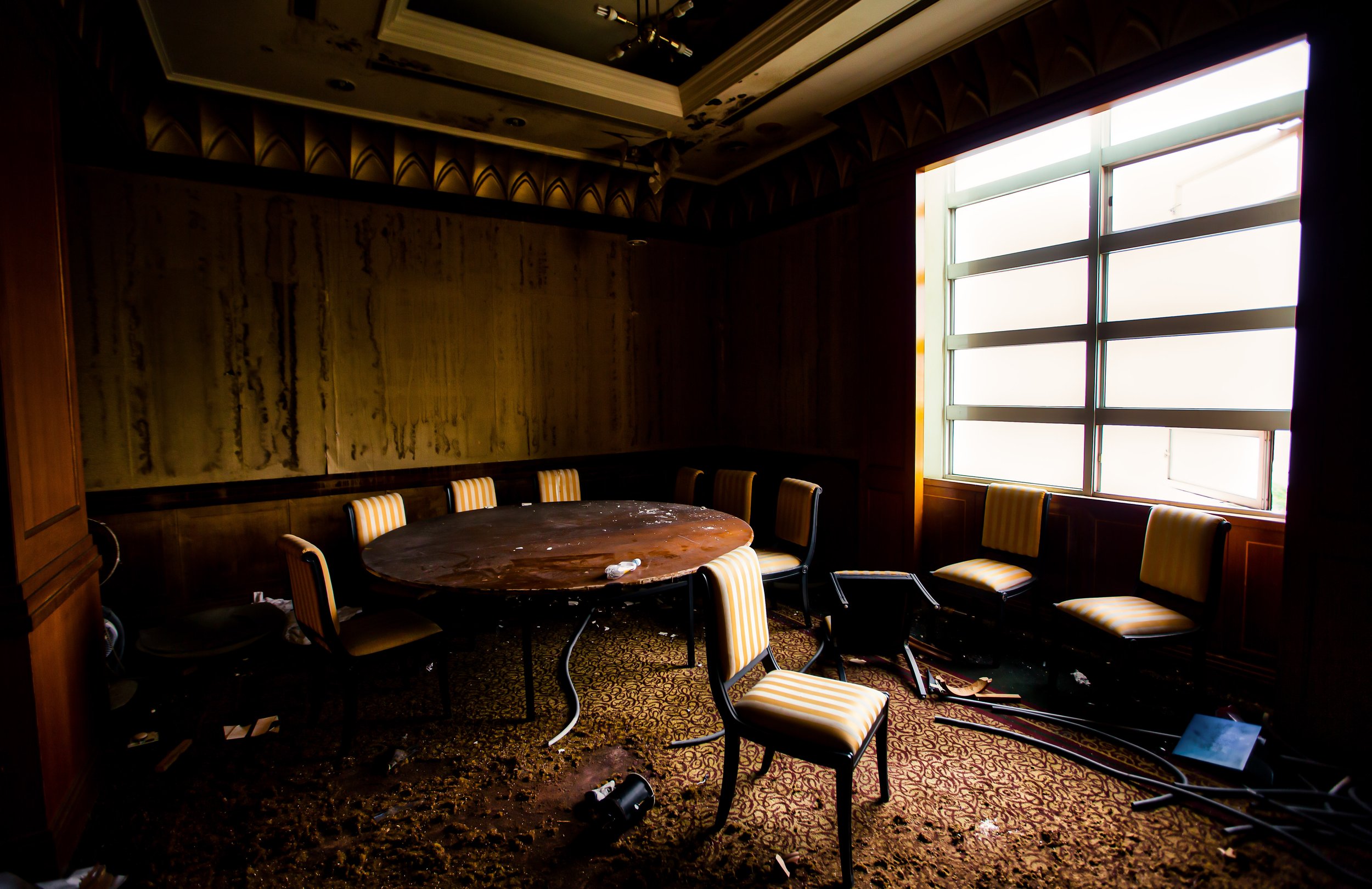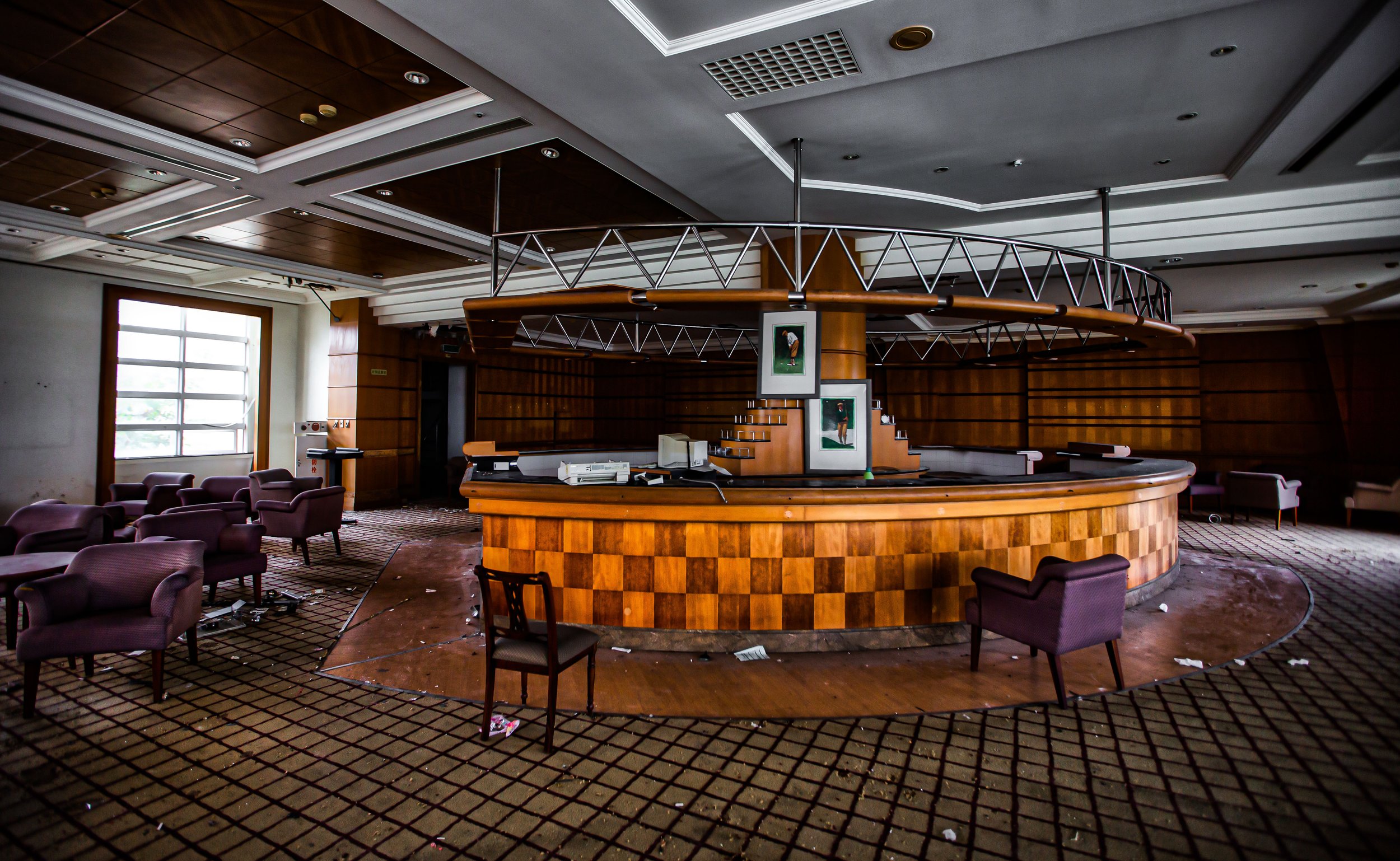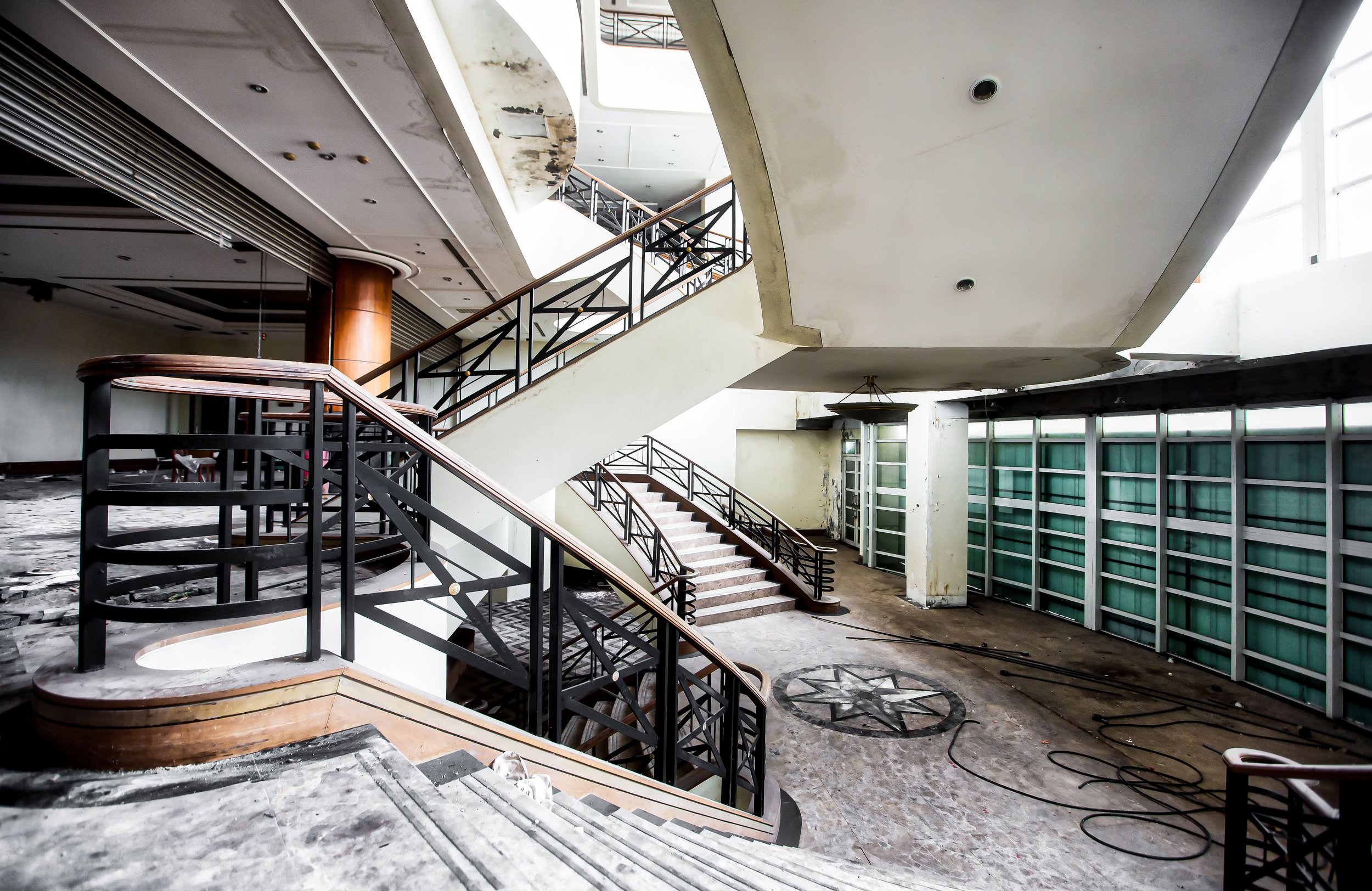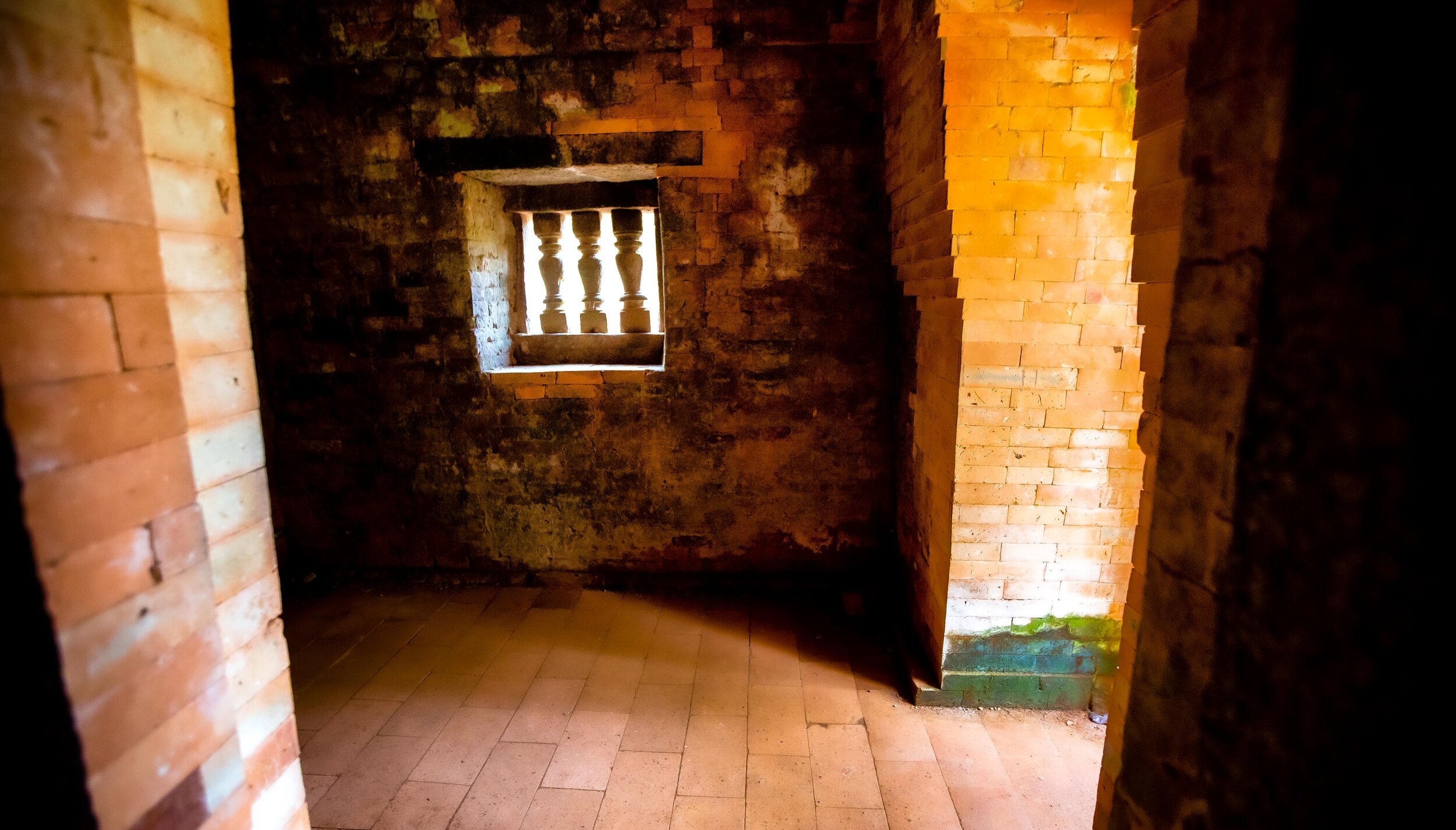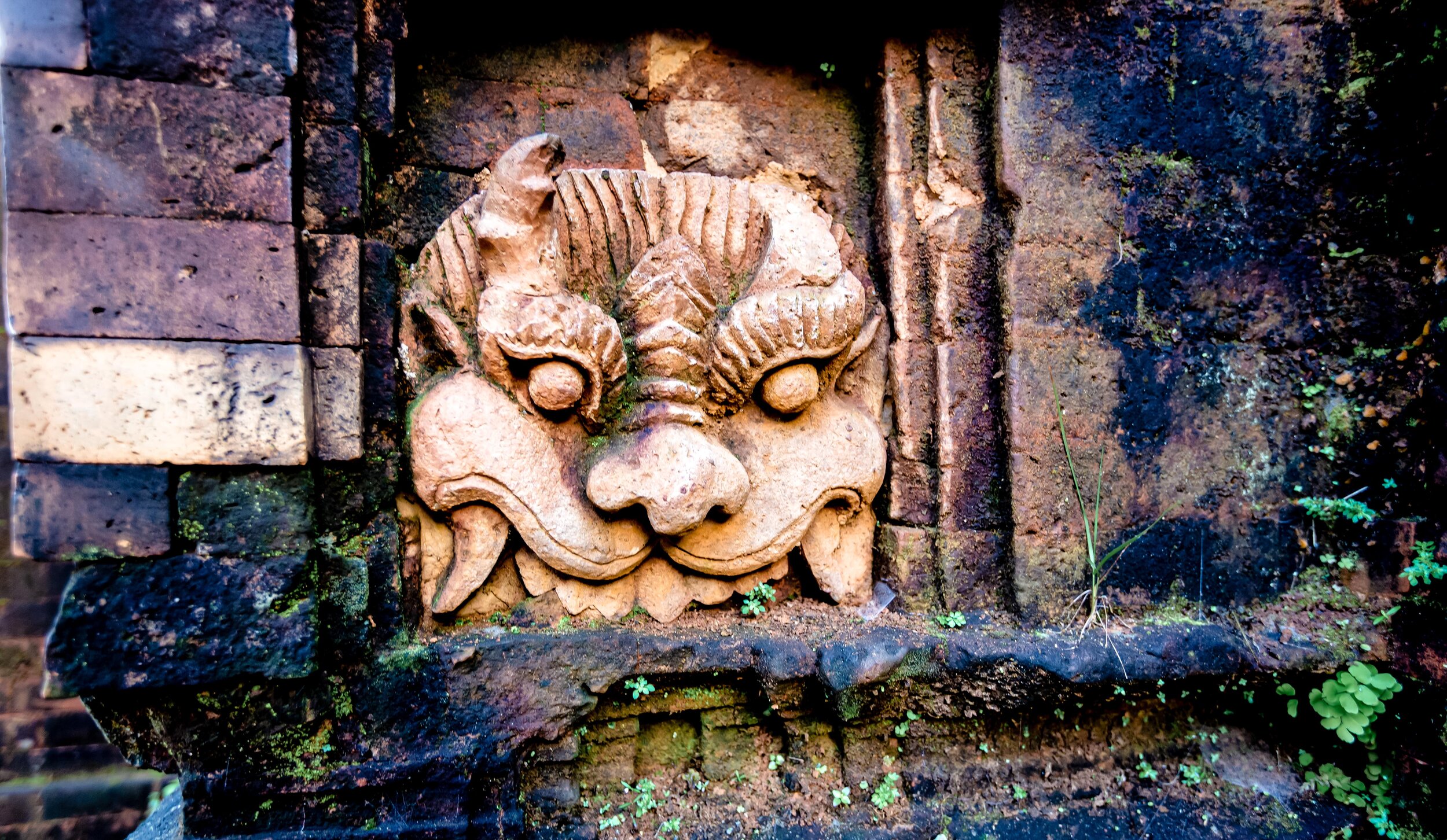Over the last few months of 2024, I spent a lot of my time completely encapsulated in a project that required a tremendous amount of research, translation, and searching for the physical locations of the well-over four hundred Shinto Shrines that were constructed in Taiwan during the half century period of Japanese Colonial rule. Instead of going out and taking photos, or making an effort to write about the ever-increasing backlog of articles that I have on my list of locations to introduce to all of you, I spent a countless number of hours at coffee shops and at home working on this project, which I’ve yet to complete.
Having spent so much time on the project, I eventually decided I needed to take a break, to relax my brain, and work on something else. Taking a look at my long list of articles to write, I thought I’d choose a couple of places that I could write about quickly, so that I could get back to work on my shrine project during the Lunar New year holiday. Hilariously, I’m probably a glutton for punishment, but the first place I chose to write about in my downtime would be an article about the ruins of a historic Shinto Shrine.
I rationalized this decision by telling myself that with all of this information fresh in my mind, I’d be able to complete this article relatively quickly, and then be able to move onto something else. Whether or not that’ll actually be the case remains unclear, but here we go. Today, I’ll be introducing the ruins of a Shinto Shrine in Tainan, and one that is currently undergoing a restoration project by the local government.
For the average reader, or the average tourist, the ruins of a Japanese-era shrine are probably pretty low on the priority list of places to visit, which is something that I completely understand that, especially given how many historic tourist destinations there are in Tainan. But for my part, documenting this piece of history is pretty important given that of the hundreds of shrines that were constructed around the island during that fifty year period, more than 95% of them have been completely destroyed.
The shrine I’ll be introducing today is located on the outskirts of Tainan City, on the grounds of a historic sugar factory. Constructed for use by the staff at the sugar factory, and for the students at a school that was constructed for the convenience of the factory’s employees. These days, if you take a look at Google Maps, you’ll see that the shrine is officially referred to in English as the ‘Yongkang Sankandian Sugar Refinery Shinto Shrine Remains’ (永康三崁店糖廠神社遺蹟), a bit of a long one, if you’re asking me, but it does tell you a lot, all of which I’ll explain below.
I’ll start by introducing the the history of the Yongkang Sankanten Sugar Factory, then I’ll provide an introduction to the shrine’s history and its architectural design, the kami who were enshrined within, and what you’ll see today if you visit.
Yongkang Sankanten Sugar Factory (永康三崁店糖廠)
It would be an understatement to say that the cultivation of cane sugar over the past century has played an instrumental role in Taiwan’s economic development. Even though sugarcane isn’t a native crop to Taiwan, it adapted well to southern Taiwan’s climate and soil, and its cultivation, while perfected by the Japanese, was something that actually starting bringing wealth to the island hundreds of year before.
The history of sugarcane cultivation in Taiwan got its start during the short-lived Kingdom of Tungning Era (東寧王國) between 1661 and 1683, and was something that was continued during Qing rule as it became a precious trading commodity with western powers. When the Japanese took control of Taiwan in 1895, the cultivation and refinement of sugarcane was something that would quickly mature, and quickly go into overdrive. During that fifty year period, more than forty factories were constructed by over a dozen companies, mostly spread throughout southern Taiwan.
What’s even more amazing, and probably difficult for a lot of people to understand is that for the benefit of Taiwan’s sugar industry, more than 3000 kilometers of private railways were constructed to transport sugarcane to factories, and then the finished product, ranging from sugar, molasses, fertilizers, ethanol, etc. were put onto the main railway line to be exported around the world.
One of those early sugar factories was constructed in the Yongkang (永康) area of Tainan in 1906, by a British firm who named the factory, ‘the Bain & Company Sugary Refinery’ (ベィン商會製糖場). The factory was later purchased by the ‘Formosa Sugar and Development Company, Ltd’, which invested in modern production machinery, which helped to increase the factory’s output. However, just a few years after the group purchased the factory, it was devastated by the 1911 Formosa Typhoon (1911年台灣南部颱風), which put construction to a sudden halt. Shortly after the typhoon, the Taiwan Sugar Corporation (台湾製糖株式会社 / たいわんせいとう), which would have been the largest sugar company in Taiwan at the time, took control of the factory and renamed it the ‘Sankanten Sugar Refinery’ (三崁店製糖場).
Working in conjunction with the nearby Shiyaroken Sugar Refinery (車路墘製糖所), Wanri Sugar Refinery (灣裡製糖所) and the Shanhua Sugar Factory (善化糖廠), Tainan’s refineries quickly became the most profitable on the island, which over the next few decades would allow their growth to continue. By the 1930s, the Sankanten Refinery had more or less constructed its own self-sustaining community with housing provided to its employees and a school for their children. The factory not only constructed a school for the children of its employees, but they also allocated space and funds to construct a shrine for the staff and the local community.
Note: This is something that I’ll explain a bit later, but it’s important to note that it became quite common, and almost necessary in some cases, during the Japanese-era for private companies to construct shrine on the grounds of their factories. These shrines were classified as ‘private’ or ‘Factory Shrines’ (工場の構內社 / こうしょうのこうないしゃ), but one of the reasons why you rarely see them counted in the total number of shrines in Taiwan is due to the fact that they weren’t always officially recognized by the government.
When the Japanese surrendered control of Taiwan after the Second World War, sugar production continued under the control of the Taiwan Sugar Corporation (台灣糖業股份有限公司), a state-run enterprise that to this day remains one of the most prosperous companies in the nation. That being said, there has been a massive decline in the production of sugar in Taiwan, and the number of sugar factories has declined from forty-two to just three. Similarly, the vast majority of the 3000 kilometers of railway that was constructed for the sugar factories have since been removed, and in a lot of cases have been replaced by roads for cars.
The Sankanten Factory continued production until 1990 (民國79年), when its management was merged with the nearby Shanhua Factory, but just three years later, it would officially shut down.
Taking into consideration that these sugar factories have been an important part of Taiwan’s economic miracle, you’ll find that a few of the larger factories around the country have since been repurposed into cultural parks, and there are several in Tainan that have become quite interesting for tourists. The Sankanten Factory, however, wasn’t afforded such preservation, and today the land where it once stood is home to a transport and logistics company. Still, if you take some time, you can find some of the historic parts of the factory remaining near the shrine, most notably its air-raid shelters.
Sankanten Shrine (三崁店社 / さんかんてんしゃ)
Compared to the more than 33,000 places of worship you’ll find scattered across Taiwan today, it might not be so impressive when I tell you that the nation was once home to more than four-hundred Shinto Shrines. The staggering number of religious sites in Taiwan is one that is actually difficult to keep track of, because they’re constantly being constructed. Still, in the half century that the Japanese controlled Taiwan, the construction of shrines was likely only comparable to what has taken place across the country in the past few decades.
Another one of the similarities between the number of places of worship in Taiwan today, and during the Japanese-era, is that the majority of shrines (something that I alluded to earlier) that were constructed around the island were considered either ‘official’, ‘unofficial’ or ‘private’ whereas today they’re simply designated as ‘official’ and ‘unofficial’
To expand on that point, the larger, officially-ranked shrines, such as the Taoyuan Shrine (桃園神社), for example, were constructed mostly with public funding by the colonial government, and their management was something that was tightly controlled. Taiwan was home to about a hundred of these officially ranked shrines divided between Imperial Ranked Shrines (官幣社), Nationally Ranked Shrines (国幣社), County-Level Shrines (縣社) and District-Level Shrines (郷社). and Unranked Shrines.
However, these ‘official’ shrines made up less than a quarter of the total number of shrines that were constructed around the island, with the vast majority of them considered ‘unrecognized’ or ‘unranked’ (無格社), and were located within indigenous villages, educational institutions, factories, military bases, etc.
Suffice to say, almost every Sugar Factory constructed around the island had its own on-site Shinto Shrine, set up for the benefit of its employees, and for the economic success of the business. The shrines that were set up within these factories tended to be quite small, and unlike the larger ranked shrines, it was uncommon for them to have staff at the shrine. In most cases, the responsibility for the upkeep of the shrine rested upon the staff at the factory, with the local community volunteering to help maintain them.
The Sankenten Sugar Factory made an official application with the government to construct an on-site shrine, and once it was approved, construction started on October 25th, 1930 (昭和5年), with a budget of 2800 Yen (Approximately 30,000USD in modern currency). Construction was completed a few months later on May 16th, 1931 (昭和6年), and was officially named Sankenten Shrine (三崁店社 / さんかんてんしゃ).
Note: The Japanese pronunciation of the area is ‘Sankanten’ (さんかんてん), while the Mandarin pronunciation is ‘Sankengdian’ (三坑店), which is quite similar. You’re likely to see it referred to by the latter romanization today.
What’s somewhat unclear about the establishment of the shrine is whether the enshrinement ceremony took place on May 18th or May 20th. What we do know, though, is that the shrine’s annual Spring Festival (例祭 / れいさい) was held on October 10th or 18th, and Harvest Festivals (祈年祭 / きねんさい) were held several times throughout the year.
What happened to the shrine after the Second World War isn’t entirely clear, with parts of the shrine removed, vandalized or destroyed. At some point, a post office was constructed on the elevated cement section of the shrine, but it didn’t seem to last very long as it was probably torn down when the sugar factory was shut down in the early 1990s.
Ultimately, the grounds were left in ruins after the closure of the factory, and it was eventually overtaken by the natural environment. In 2009 (民國98年), the shrine grounds were recognized by the Tainan City Government as a Protected Historic Property (直轄市定古蹟), which meant that efforts would have to be undertaken to have the site preserved. With the amount of historic properties in Tainan, though, there was a long list of other historic properties that required funding for restoration. Ultimately it took more than a decade for the restoration of the shrine to start.
As I’m writing, the restoration process is still on-going, but should be completed in the near future. So, if you’re in the area and you take the time to visit, you’re likely to encounter the ruins of a shrine that hasn’t been as well-kept since the 1940s!
I’ll end this section by sharing an interesting story about the restoration of the shrine.
In the decades since the Japanese surrendered control of Taiwan, the vandalism and destruction of cultural and religious elements from that period of Taiwan’s history has become common. There are, of course, very understandable reasons for this. That being said, even though there are people who elect to destroy these relics of Taiwan’s heritage, you’ll also find people who are actively engaged in preserving these things.
In this specific case, when the Sankenten Shrine was officially recognized for preservation, a former volunteer at the shrine (at least that’s how it was explained) contacted the government to let them know that they had taken it upon themselves to preserve the shrine’s name pillar, which was originally thought to been destroyed. The individual returned the pillar to the government, and it was locked away for safe-keeping.
Today, a beautifully reproduced shrine pillar stands on the grounds identifying that this was once the Sankenten Shrine.
Link: 古蹟「三崁店社」石柱 重見天日 (自由時報)
Kami Enshrined at Sankanten Shrine
When it comes to the kami who were enshrined within Sankanten Shrine, there’s not much of a variation with those who were enshrined at the hundreds of other shrines constructed across Taiwan. The Japanese were initially quite selective with the kami they chose to promote in Taiwan, and were mostly deities, who the people of Taiwan could relate to, given that within Taiwanese folk religion, you’ll find similar figures.
As a colony, the government placed considerable emphasis on Taiwan’s agricultural and natural resources, and for much of the half century of Japanese rule, they offered massive incentives for farmers to come to the island to contribute, especially since a lot of the farmland in Japan was being industrialized at the time. Moreover, within Sugar Factories, like the Sankanten Factory, the kami chosen for these shrines, were those that offered spiritual assistance to people working in this sector.
The following were the five kami originally enshrined at Sankanten Shrine:
-
The Three Deities of Cultivation (開拓三神 / かいたくさんじん)
The Three Deities of Cultivation, consist of three figures known for their skills with regard to nation-building, farming, business and medicine.
The Three Deities of Cultivation are as follows:
Okunitama no Mikoto (大國魂大神 / おおくにたまのかみ)
Okuninushi no Mikoto (大名牟遲大神 / おおなむちのかみ)
Sukunabikona no Mikoto (少彥名大神 / すくなひこなのかみ)
While these deities are also quite common among Japan’s Shinto Shrines, they were especially important here in Taiwan due to what they represented, which included aspects of nation-building, agriculture, medicine and the weather. Given Taiwan’s position as a new addition to the Japanese empire, ‘nation-building’ and the association of a Japanese-style way of life was something that was being pushed on the local people in more ways than one.
Likewise, considering the economy at the time was largely agricultural-based, it was important that the gods enshrined reflected that aspect of life.
Toyoke no Omikami (豐受大神 / トヨウケビメノカミ)
‘Toyoke no Omikami’ is a female kami hailing from Japanese mythology. Known simply as the Japanese ‘Goddess of Food,’ she is more formally referred to as the ‘Kami of Agriculture and Industry’ serving a role similar to the Three Pioneer kami mentioned above.
Residing at the Ise Grand Shrine (伊勢神宮), one of her roles is to provide food for her counterpart, the sun goddess Amaterasu (天照大神), which means that when you encounter a shrine dedicated to Amaterasu, you’re also very likely to find a shrine dedicated to Toyoke no Omikami, as well.
Link: Toyouke-hime (Wiki)
Prince Kitashirakawa Yoshihisa (北白川宮能久親王)
Prince Yoshihisa, a western educated Major-General in the Japanese Imperial Army, and a member of the Japanese imperial family was commissioned to participate in the invasion of Taiwan after the island was ceded to the empire. Unfortunately for the Prince, he contracted malaria and died in either modern day Hsinchu or Tainan (where he died is disputed), giving him the dubious honor of being the first member of the Japanese royal family to pass away while outside of Japan in more than nine hundred years, in addition to being the first to die in war.
Shortly after his death he was elevated to the status of a ‘kami’ under state Shinto and was given the name “Kitashirakawa no Miya Yoshihisa-shinno no Mikoto“, and subsequently became one of the most important patron deities here in Taiwan, as well as being enshrined at the Yasukuni Shrine (靖國神社) in Tokyo. Of the more than four-hundred shrines constructed around Taiwan during the Japanese-era, its safe to say that Prince Yoshihisa was enshrined within at least ninety percent of them, making him one of the most prolific kami in Taiwan.
Link: Prince Kitashirakawa Yoshihisa (Wiki)
Even though I’ve already detailed most of the important events that led up to the construction of the sugar factory, its shrine, and what happened after the Japanese-era, I’ve gone ahead and put together a concise timeline of events below. For anyone interested in a summarized look at the shrine’s history, click the drop-down box below:
-
1906 (明治39年) - A British firm constructed a sugar refinery in the Sankanten area of Taiwan with an investment of 200,000 Yen, under the name ‘The Bain & Company Sugary Refinery” (ベィン商會製糖場) with a production capacity of about 300 tons.
1909 (明治42年) - The Bain & Company shifts its focus from the production of sugar to honey and sells its shares of the factory to the ‘Formosa Sugar and Development Company, Ltd’, which invested a further 80,000 Yen in the latest machinery, increasing the factory’s output to 850 tons.
1911 (明治44年) - The 1911 Formosa Typhoon (1911年台灣南部颱風) causes considerable damage in Southern Taiwan, resulting in 290 deaths, and also considerably damages the sugar factory. As a result, the Taiwan Sugar Corporation (台湾製糖株式会社 / たいわんせいとう) took control of the factory and oversaw its repairs. The factory was once again upgraded to a production capacity of 1200 tons, making the three Tainan factories the most profitable on the island. It was also at this time that the refinery was formally renamed the Sankenten Sugar Refinery (三崁店製糖場).
1919 (大正8年) - Due to the growth and the the profitability of the sugar factory, a school is constructed nearby for the benefit of the children of its employees. The Sankanten Branch of the Tainan First Elementary school (臺南第一小學校三崁店分教場) opened for the 1919 school year.
1920 (大正9年) - In April, the sugar factory’s school becomes independent of the Tainan First Elementary School and is renamed the Sankenten Normal Elementary School (三崁店尋常小學校).
1930 (昭和5年) - Construction work on a shrine for the sugar factory officially starts on October 25th with a budget of about 2800 Yen (About 30,000USD in modern currency).
1931 (昭和6年) - Construction is completed on May 16th, with the enshrinement ceremony taking place a few days later, either on May 18th or May 20th.
1993 (民國82年) - The Yongkang Sugar Factory formally ends operations.
2009 (民國98年) - The shrine is recognized as a Protected Historic Property (直轄市定古蹟) on May 27th.
2012 (民國101年) - Once thought to have been vandalized and destroyed, the Sankenten Shrine’s Shrine Pillar (標柱 / しめばしら) was returned to the Tainan Bureau of Cultural Affairs by volunteers who had taken it upon themselves to have the historic marker preserved. However, the pillar that you’ll find on the grounds today is a replica.
2024 (民國113年) - The restoration project of the Sankenten Shrine Ruins (三崁店糖廠神社遺跡) gets underway with efforts to clean up the site, repair damaged parts of the shrine, and reproduce some of the elements of the shrine that have been lost. The project was funded by the Tainan City Cultural Assets Management Office (台南市文化資產管) with a budget of about 10,000,000NTD.
Architectural Design
There are many things that can be said about the Japanese during their fifty-year period of rule over Taiwan, both negative and positive, but as far as I’m concerned, one of the more admirable aspects of that period of Taiwan’s history, given the technology, is that they were great at documenting things with photos. Obviously, the camera technology of the day wasn’t anything even remotely similar to what we have today, so the concerted effort that was made to take photos of what was happening in Taiwan in those days is something that we can appreciate today. Such is the case that now, whenever I write about one of Taiwan’s historic buildings, its usually easy to find photos of how it looked more than a century ago. This goes for both buildings constructed during that era, but also temples and other places of worship that predated the Japanese-era.
That being said, writing about the Sankenten Shrine’s architectural design hasn’t been an easy task. I’ve spent a lot of time looking, but there aren’t any photos of the shrine in its original state to be found. However, given the layout that we can still see today, historic record, and what would have been rather typical for shrines like this, I’m confident that I can offer readers a good indication of how the shrine originally appeared with a comprehensive list of all of the pieces that made it whole.
Below, I’ll start by introducing each specific part of the shrine, and then I’ll move onto some of the more in-depth design specifics, offering some illustrations of the style of architectural design that was used to construct it.
The first thing to remember about the Sankenten Shrine is that it was located on the grounds of a factory, and like the vast majority of Taiwan’s Shinto Shrines that were located on school grounds or on the grounds of a private company, it was considerably smaller than a full-fledged shrine. Despite its relative size, though, the shrine included quite a few important elements that you’ll find at most Shinto Shrines.
Visiting Path (參道 / さんどう) - The Visiting Path included a stone pathway to the shrine, a stone ‘shimebashira’ (標柱 / しめばしら) shrine pillar at the entrance, indicating the name of the shrine, a shrine gate (鳥居 / とりい), six sets of stone lanterns (石燈籠 / しゃむしょ) lining both sides of the path, a flag pole (竿 / さお), and a set of komainu (狛犬 / こまいぬ) lion-dog guardians.
Purification Fountain (手水舍 / ちょうずしゃ) - located on the western side of the Visiting Path, the Purification Fountain was a simple stone water fountain where visitors could perform a purification ritual prior to worshiping at the shrine.
Shrine Fence (玉垣 / たまがき) - a small stone fence that surrounded the sacred area of the shrine, preventing people from wandering into a space where they shouldn’t be.
Main Hall (本殿 / ほんでん) - Elevated on a ‘kidan’ (基壇 / きだん) stone platform, the Main Hall was a small wooden structure that was the home of the shrine’s kami.
With an idea of what once existed at the shrine, its time to talk about what continues to exist today.
Starting with the traditional Visiting Path, otherwise known as the “sando” (さんどう), this is an essential aspect of the layout of shrines, no matter how large or small they are. To the average person, the path may just seem like a long walkway that leads visitors to the shrine, but these paths actually serve both functional and symbolic purposes. In Japanese, the word ‘Shinto’ can be translated literally into English as the “Pathway to the Gods” (神道), so the “path” is one that you take on the road to spiritual purification, and the path contains several elements that assist with that journey.
In this case, the original stone path that led to the shrine remains intact, which is great for helping people better understand the original layout of the shrine. At the entrance to the Visiting Path, you’ll find the shrine pillar (標柱 / しめばしら), a replication, as I mentioned earlier, with the name of the shrine ‘Sankenten Shrine’ (三坑店社) written in Kanji horizontally on the front.
Just beyond the pillar, you’ll find pedestals on either side of the stone path, which were once the home of the shrine’s pair of stone guardians. Whether they have been vandalized, stolen, or destroyed is unknown, but all that remains today is their cement pedestals. That being said, in some cases, the stone guardians that once guarded the hundreds of Shinto Shrines around the country, most of which were beautifully crafted and quite expensive, can be found guarding the entrances of nearby temples. It’s possible that the shrine’s guardians are still performing their duties, but their location remains undocumented.
Similarly, all six sets of the original stone lanterns (石燈籠 / しゃむしょ) have either been removed or destroyed. However, one of the pedestals where the lanterns were located features the original shaft (竿 /さお) that connected to the base on the ground and was used to support the upper parts of the lantern. What’s surprising about the shaft is that it still has the inscribed words ‘Constructed in May of the 6th year of the Showa Era’ (昭和六年5月建之). What’s significant about this is that in most cases, these inscriptions referring to either the Meiji (明治), Taisho (大正) or Showa (昭和) eras of Japanese rule, have mostly been vandalized over the years.
In this case, May of the Sixth year of Emperor Showa’s reign refers 1931, and since the shrine was officially opened on either May 18th or May 20th of that year, the pedestal is one of the few markers that indicate the complete history of the shrine.
Just beyond the pedestals, where the first set of lanterns once existed, you’ll find two circular pieces of cement on either side of the path. These were originally part of the base that held up the shrine gate, which has also either been removed or destroyed. Following the path, there are another two sets of lanterns before you’ll encounter a space on the western side where the path branches off to where the purification fountain (手水舍 / ちょうずしゃ) is located. While the stone fountain itself remains on site, whether or not there was a roof-covered building surrounding it is a bit of mystery. Looking at the space around the fountain, though, there isn’t much evidence that there was once a cement base as there are in other areas of the shrine, so it’s likely that the fountain that you see now was a standalone part of the shrine.
Now, onto the main section of the shrine, the Visiting Path ends in a short set of stairs that visitors would have taken to the front of where the small shrine was originally located. The worship area of was elevated on a stone base, which still exists today, and the same goes for the stairs. The elevated worship space of the shrine features a cement shrine fence (玉垣 / たまがき) on all four sides. The fence is still there, but it looks like there has been some work done to restore it as its looks quite new.
One of the major differences between this shrine, and the larger more full-fledged shrines is that there weren’t dedicated buildings for the Hall of Worship (拜殿 /はいでん) and a Main Hall (本殿/ほんでん) behind it. Instead, the shrine was just a miniature version of a ‘Main Hall’ that was propped up on an elevated base, known as a ‘kidan’ (基壇 / きだん). The original shrine has long since been removed, but amazingly, the base remains in its original position.
Even though there aren’t any historic photos of the shrine available, what we do know is that it was constructed using the ‘shinmei' (神明造 / しんめいづくり) style of architectural design, which actually tells us a lot. The shinmei style is a spinoff of what is claimed to be a style of design that is more than two-thousand years old. Most commonly associated with the design of the Ise Grand Shrine (伊勢神宮 / いせじんぐう), arguably the most important Shinto Shrine in Japan, the ‘shinmei’ style is characterized by its extreme simplicity and antiquity, and is thought to imitate the design of Japan’s early rice granaries.
Link: Shinmei-zukuri | 神明造 中文 | 神明造 日文 (Wiki)
In this case, in lieu of a much larger building, the shrine made use of what is known as a ‘hokora’ (祠 / ほこら), which is essentially a miniature version of a much larger shrine, and shares similar architectural designs, albeit on a much smaller scale. In this style of design, these buildings tend to have a rectangular-shaped base, known as a ‘moya’ (母屋 / もや), which is surrounded by a ‘hisashi’ (廂) veranda on all four sides.
In the front, there would have been a narrow set of stairs in the center that led to the front door of the shrine, where the repository of the kami would have been placed. However, unlike in other styles of Japanese design, you wouldn’t have found pillars on the exterior of the building, which are typically there to support the weight of the roof.
In the Shinmei-style, the roofs that cover the buildings generally make use of the asymmetrical ‘kirizuma-yane’ (切妻屋根 / きりづまやね) gabled roof style of design, but even though the roof eclipses the base, the columns aren’t necessary because the ‘moya’ is able to support its weight. In modern times, these gabled roofs are typically covered with copper sheeting, cypress bark or Japanese cedar shingles, but since there isn’t any information regarding the materials used to construct the roof, it’s difficult to guess what was used. In terms of decorative elements, though, roofs that cover shinmei-style buildings are typically adorned with what are known as katsuogi (鰹木/かつおぎ) and chigi (千木 / ちぎ) ornaments.
To explain, the ‘katsuogi’ are long cylindrical timber-like pieces of wood that rest on the flat base of the roof. The ‘chigi’ on the other hand are located on the two gable ends and can be cut either horizontally or vertically, known as uchi-sogi (内削ぎ) and soto-sogi (外削ぎ), respectively. How they’re cut is determined by the kami who reside within the building, so even though we don’t have any photos of the original shrine, it’s easy to assume that they were cut vertically in the ‘uchi-soto’ style given that the kami within are predominately male deities.
Unfortunately, the best I can do is offer diagrams of this style of design to better help readers understand what once existed on top of the stone pedestal. Like most of the Shinto Shrines that were constructed around Taiwan, not much of the original shrine remains in place today, but in this case, there is more than enough to assist anyone who visits in understanding what once originally stood in this location, and as far as these things go, the ruins of the Sankenten Shrine is an excellent reminder of the past, and one of the more complete shrine experiences you’ll have in Taiwan today.
Getting There
Address: Intersection of Ren’ai Street and Sanmin Street, Yongkang District, Tainan City (臺南市永康區仁愛街與三民街交界)
GPS: 23.054472, 120.244833
Alright, now for the bad news. Unlike a lot of Tainan’s tourist destinations, without your own means of transportation, this one isn’t easy to visit.
The shrine ruins are located north of Tainan City in Yongkang District (永康區), and even though there’s a bus that can get you there from Tainan Station, it’s not convenient, and you may find yourself stuck in the middle of nowhere waiting for another one to come. So, if you don’t have a car or a scooter, I’m not sure how much I recommend the average tourist heading over to check it out.
Still, if you’re in the area and you insist on visiting, you have a couple of options for public transportation.
The first option is to take the train north from Tainan Station to Yongkang Station (永康車站) and from there hopping on a Youbike for the ten minute ride to the shrine. However, even though this seems like a relatively straight forward route, especially if you have access to Google Maps, you’ll have to cross some pretty busy roads, which in southern Taiwan tend to be dangerous, and not very pedestrian-friendly.
If you haven’t already, I highly recommend downloading the Youbike App to your phone so that you’ll have a better idea of the location where you’ll be able to find the closest docking station.
The second option is to take Tainan Bus #21 (火車南站 - 永康工業區) from the Southern Side of the Tainan Train Station all the way to the Yongkang Industrial Park. However, if you take a look at the schedule, it’s important to note that the bus only comes eight times a day, which means that you may end up having to wait a while for another one to come by to pick you up.
Otherwise, the best option for getting around the more rural areas of Tainan City is to simply rent a scooter near the Tainan Train Station.
If you have a Taiwanese drivers license or an International Drivers License, you shouldn’t have much trouble. If you have neither, you might still find a rental company that is willing to rent to you, but driving without a license isn’t recommended, especially for insurance reasons.
My visit to the Sankenten Shrine ruins came at a time when the site was in the process of being restored by the city government. Personally, I would have preferred to have seen what the shrine was like prior to the start of the restoration process, so I could have experienced it in its original rundown state, but now that its been cleaned up, its much easier to see all the different aspects of the shrine that might have been missed due to overgrowth. I’m not sure what the future holds for the shrine ruins once it officially reopens, but I really hope they leave it more or less as it is.
References
永康糖廠 (Wiki)
永康三崁店糖廠神社遺蹟 (台灣宗教文化資產)
永康三崁店糖廠神社遺蹟 (國家文化記憶庫)
永康三崁店糖廠神社遺蹟 (國家文化資產網)
永康三崁店糖廠神社遺蹟 (文化部)
台南古蹟三崁店神社 年底修復完成 (聯合新聞網)
古蹟「三崁店社」石柱 重見天日 (自由時報)
shinmei-zukuri 神明造 (JAANUS)







